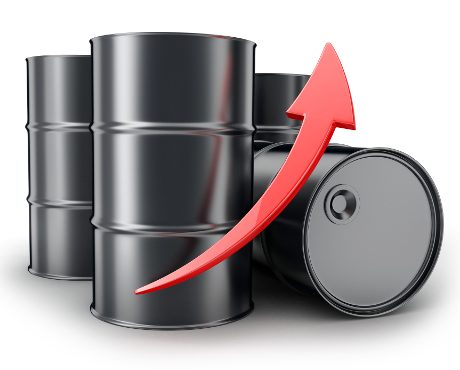This Sector Is Booming
One of the most common questions I get from friends and family nowadays concerns gas prices.
Questions like, “Rob, the station now charges over $3.00 a gallon. When will we get some relief at the gas pump?”
And they’re not the only ones getting charged an arm and a leg. The average price for regular gasoline hit $2.85 a gallon nationwide last week, the highest level since 2015.
Of course, I don’t know where the market will go next. Low oil prices have knocked a lot of energy producers out of business. Geopolitical tensions, courtesy of President Trump, have put a firm bid in the market.
That commentary might sound smart, but it won’t help you predict the next move in the energy market. I’ve long ago given up on commodity price predictions, choosing to focus my time elsewhere.
That doesn’t mean we can’t make money in the oil patch.
The trick? Dollar cost averaging.
“When oil prices go down, energy stocks get clobbered,” I told paid newsletter subscribers in a previous issue of Automated Income. “But by committing more money throughout the cycle, investors can lock in high up-front yields (never mind the substantial appreciation in share prices when the industry eventually recovers).”
For readers, that advice has paid off.
Since bottoming in early 2016, the Energy Select Sector SPDR ETF (NYSEARCA:XLE), which tracks the performance of largest oil and gas stocks in the United States, has soared over 40%. And the index has picked up steam lately. Most of those gains occurred over the past few weeks alone.
What’s more, this might be the beginning.
You have a notoriously cyclical sector here. Oil patch investors have to stomach massive booms and busts.
If you get your timing wrong on one of these cycles, you can lose your shirt. Catch a boom early, though, and you might never have to work again.
When energy stocks get going, triple-digit profits aren’t just possible, they’re normal. And sentiment can shift in an instant. For that reason, I always maintain some exposure to the energy sector.
So where should investors put their money now? Energy producers represent a simple option. If oil prices rise, these stocks can rally in a hurry.
But I don’t like investing in oil drillers. It’s a low-margin, capital-intensive business. And while a few wildcatters might strike it rich, a lot go out of business.
For subscribers, I prefer investing in “picks and shovels.” Rather than trying to hit it rich on the big strike, these companies supply essential tools and services. These firms present the safer (and often more profitable) way to invest in the energy sector. For example:
Pipelines: Pipelines ship oil, gas, and other commodities from supply basins to customers. These assets resemble highway toll booths, collecting fees on every barrel that flows through. And because these businesses often enjoy monopolies in the markets they serve, pipelines make far higher returns than traditional drilling stocks. As a result, many pay out yields ranging from 12% to even 17%.
Infrastructure: Thanks to new technologies, America has enjoyed an oil boom over the past decade. That has increased demand for everything from storage tanks and processing facilities to terminals and tanker ships. While not as profitable as pipelines, these related businesses earn lucrative fee income from the oil patch. This results in more returns for investors and tidy income streams.
Refineries: U.S. oil production has outstripped the nation’s infrastructure. As a result, the supply glut has sent oil prices plunging in some parts of the country. This is great news for well-positioned refineries, which convert commodities like oil and natural gas into usable products. They now earn thick profit margins by buying their raw inputs cheap, then selling their finished goods to consumers for a huge markup. Across the industry, a handful of partnerships now pay out double-digit yields.
When business gets rockin’ and rollin’ in the oil patch, investors can make a lot of money. For that reason, I always maintain some exposure to this sector. And while I can’t predict where gas prices will go next, the three industries above deliver reliable income in most scenarios.
